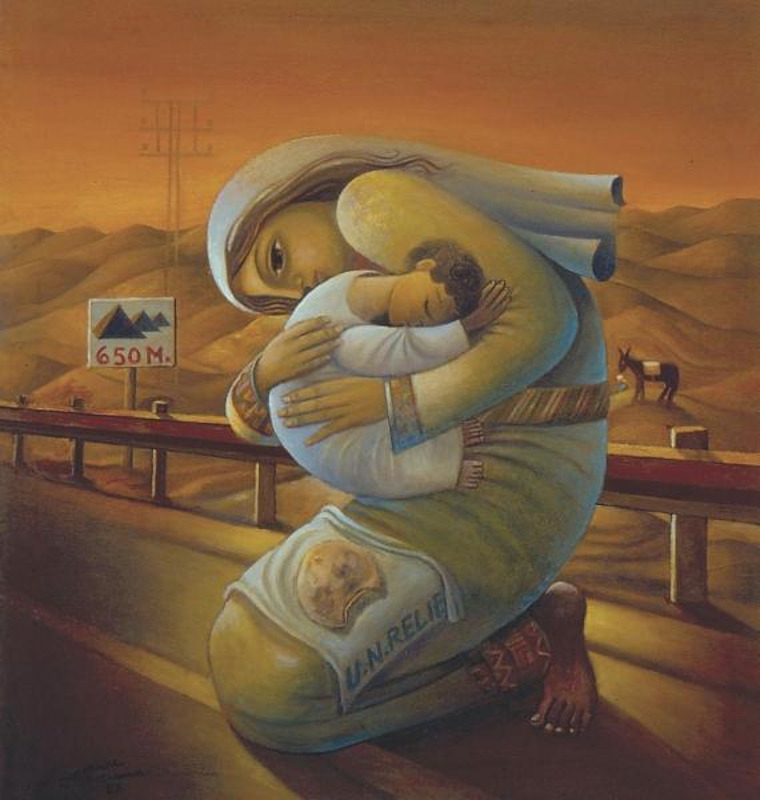Reflection On Palestine
“Flight into Egypt”
by Andy Braunston
Have a look at this picture… What do you see?
This painting was created by Sliman Mansour, an artist in Palestine. His style which has come to symbolise Palestinian national identity has inspired generations of Palestinian and international artists.
Using symbols derived from Palestinian life, culture, history, and tradition, Mansour illustrates Palestinians’ resolve and connection with their land. With women wearing traditional embroidered dresses, he represents Palestinian land and protest. With images of Jerusalem and the glistening Dome of the Rock, he represents the Palestinian homeland and the dream of return.
He’s called this piece the “Flight into Egypt’. Let’s now take a moment to remember the story of the flight into Egypt.

Reflection
The Holy Family, when facing danger and death, were able to find sanctuary in Egypt. Today Palestinians wait to see if the Israeli Defence Forces will continue their relentless military action and move them from Rafah – where they were sent for safety. The border is sealed but there is speculation the Egyptians are building a pen in the desert, with no facilities, to “house” displaced Palestinians.
Safety is tantalisingly close yet impossible to get to. The Palestinian mother and child try, in vain, to get to the safety of Egypt; in this picture we also see the plight of displaced, bombed, and starved Palestinians. The woman and child are fed by the UN Relief agency – now condemned and hampered in its mission by Israel which maintains it has been used by Hamas.
Around the world ordinary people react with horror to the treatment of the Palestinians; anger, rage, and grief at the atrocities in October are now held alongside desperate emotions at the plight of the Palestinians – bombed, starved, displaced and condemned by a superior military force, possibly eager for more of their land aided and abetted by many of the world’s great powers. Dissent is demonised as anti-Semitic. Games are played in Parliament to spare the blushes of politicians who should know better; vetoes are wielded in the UN to stop even the mildest criticism. A weak archbishop won’t meet a Palestinian pastor because he doesn’t like the company the pastor keeps. Meanwhile mothers and their children are left to their plight.
Palestinian artists who depict Jesus as Palestinian have been sharply criticised yet art, like theology, pushes boundaries and offers new understanding. Jesus can be authentically depicted in many ways; he identifies with Jew and Gentile, male and female, slave and free, Israeli, and Palestinian. Yet depiction is not enough; art, like theology, must lead to action. Jesus, told us, after all, to recognise him in the least.
Jesus personifies the poor, forsaken, homeless, hungry, thirsty, and naked. In today’s world Jesus is to be found in many places but not least with the millions of Palestinian refugees seeking to find shelter and safety – as once his parents found refuge in Egypt.
